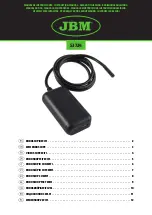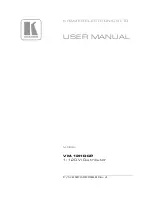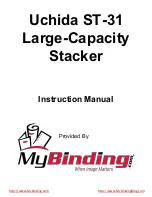
4
Orifice Removal & Installation
NOTE:
Before proceeding, perform steps 1 - 3 in the System
Depressurization section and confirm that the restrictor orifice
size meets the requirements outlined in the outdoor unit
installation manual.
CAUTION:
To prevent damage to the unit or internal
components, it is recommended that two
wrenches be used when loosening or tightening
nuts. Do not over tighten!
1. Using two wrenches, loosen the nut and distributor body
as shown in Figure 2. Turn the assembly nut counter-
clock-wise until the orifice body halves are seperated.
2. Insert a light-gauge wire hook between the distributor
body and the restrictor orifice while being careful not
to scratch either part. Carefully remove the restrictor
orifice from the distributor body. See Figure 3.
Factory supplied orifice sizes are listed in Table 1 (page
6). If the orifice must be replaced, follow steps 1 - 5.
Figure 2. Loosening of Nut & Distributor Body
Install restrictor with
rounded end down
in the distributor
Figure 4. Restrictor Insertion into Distributor Body
Figure 3. Removal of Orifice
Carefully remove the
restrictor orifice from
the distributor body
3. Check the actual size of the new orifice. The size is
stamped on its side. Do not use pin gauges to measure
the orifice diameter.
4. Insert the new orifice into the distributor body, rounded
end down. See Figure 4.
CAUTION:
To prevent damage to the unit or internal
components, it is recommended that two
wrenches be used when loosening or tightening
nuts. Do not over tighten!
5. Realign the assembly nut on the distributor body and
hand tighten both components. Mark a line on both
bodies and then tighten an additional 1/4 turn using two
wrenches. The movement of the two lines will show how
much the nut is tightened. If a torque wrench is used,
tighten to 10-12 ft. lbs. or 14-16 Nm.
Connecting the Linesets
1. Route and cut both lineset tubes to proper length in
accordance with the outdoor unit specifications. Verify
the ends are round, clean, and free of any burrs.
2. Connect the suction and liquid lineset tubes.
CAUTION:
It is recommended that a wet rag be wrapped
around the suction line in front of the close
off plate before applying heat. Failure to keep
components cool during brazing may result
in structural damage, premature equipment
failure, or possible personal injury.
3. Braze the individual connections with dry nitrogen flowing
through the joints. This will prevent internal oxidation
and scaling from occurring.
IMPORTANT: To prevent internal oxidation and scaling
from occuring, braze all connections with dry nitrogen
flowing through the joints.
4. Wrap the refrigerant lines with pressure sensitive
neoprene or other suitable material especially where
the lines enter the opening in the sheet metal.
5. Evacuate the system of moisture and non-condensables
to prevent low efficiency operation or damage to the
unit. The suggested range of evacuation is 250 - 500
microns.
6. Charge the system with refrigerant.
Please Refer to
the outdoor unit installation manual for additional
charging instructions.
7. Check the system for leaks, including the lineset and the
brazed joints. NOTE: Apply a soap and water solution on
each joint or union with a small paintbrush. If bubbling
is observed, the connection is not adequately sealed.
8. Properly dispose of all removed parts.
Summary of Contents for C8BA Series
Page 7: ...7 ...


























